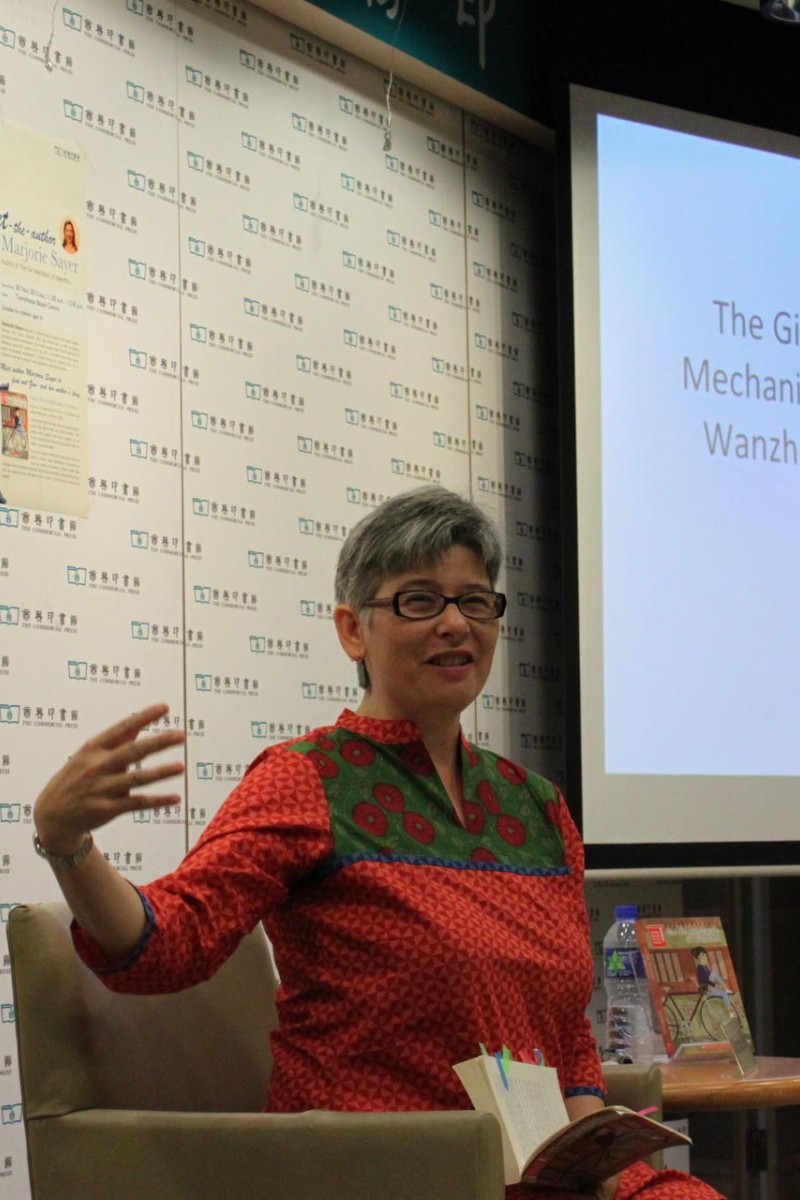
An author takes YP junior reporters behind the scenes of her new book, explaining an unusual Sino-African link
 Author Marjorie Sayer tells her audience the secret is to follow your heart. Even if you feel like a "zebra among horses", if you love doing it, then do it.
Author Marjorie Sayer tells her audience the secret is to follow your heart. Even if you feel like a "zebra among horses", if you love doing it, then do it.Marjorie Sayer is Chinese, English, Persian and Indian. She has studied maths and physics in Canada (University of British Columbia) and the United States (University of California, Berkeley). Despite her focus on those two topics, she published her first novel, The Girl Mechanic of Wanzhou, late last year. Young Post's junior reporters were invited to her book talk, and interviewed the multicultured and multitalented author.
Unlikely influence
The Girl Mechanic of Wanzhou is about a 12-year-old girl named Zun, who lives in the fictional town of Wanzhou in China. The story is set in 1902, when the strict social rule of foot binding was becoming more relaxed. Zun is unlike any other girl because she fixes machines with her father.
What helped Sayer visualise the story's setting of early 20th century China was, surprisingly, a trip she took to Africa. Although it's the 21st century, Africa is still behind, especially in technology. The experience helped her imagine a similar period in China's history.
One of the key elements of the story is the symbol of the bicycle, and Africa also gave her this idea. Sayer saw the Chinese-made Flying Pigeon bicycles everywhere in Africa, so she wrote them into the story as a recurring symbol of freedom in the rigid imperial Chinese society.
Olivia Lam
Tips from a pro
Sayer is obviously a talented writer. Despite having most of her education in maths and physics - the polar opposites of creative writing - her first-ever book won a first runner-up in the Scholastic Asian Book Award.
She shared some of her secrets of writing a successful story:
- Don't forget the plot of the story and always remind yourself of it. "The writing process is very different for different people, but for me, the most important thing is returning to the problem [in the story]," said Sayer. "I need to return to my story every day and not be distracted."
- Brainstorm. "The hardest part for writers is actually starting the story," says Sayer. "So, I start by doing a little bit of outlining." But she warns that "outlines are always traitors". "They betray you; they don't live up to their promise, because it's not as if you outline and the book is done," she explained.
- Use fictional settings instead of real ones. This is to prevent readers from thinking, "But I've been there, and there's no house there!" she explained. It was especially important for her novel because "it's not meant to be a historical story, but more of a historical fantasy, about innovation and freedom".
Stacey Chan
Some thoughts about life
Writing nearly 200 pages of fiction sounds difficult, but Sayer told us that the secret is experience.
No, not experience in writing novels, but experience in life. It seems easy for Sayer to say because she's unique. The most unusual thing about her is that she was the only girl in her physics class at university. She is different from other girls, and this can be seen in her book's main character, Zun, who is also unique.
Zun can read and write, which was unusual for girls during that time; she loves all things mechanical; and doesn't have bound feet, a centuries-long custom for girls. "An author can only write about what's inside them. It's hard to write a story that's mainly based on others," Sayer said.
She also shared a secret to living life: follow your heart. Even if you feel like a "zebra among horses" or you're the only girl doing physics, if you love doing it, then do it.